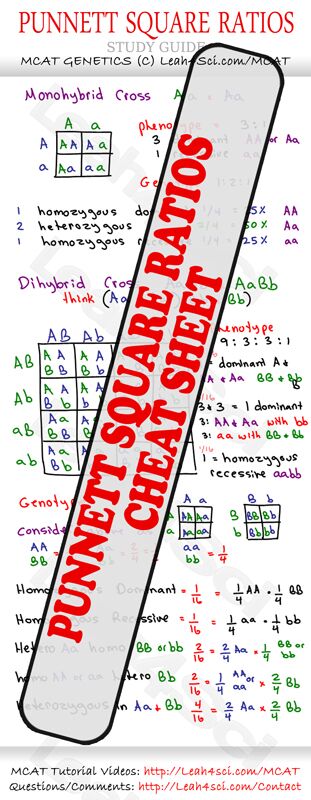When it comes to Punnett Squares in MCAT Genetics, that last thing you want to do is write out a complete 4 square or 16 square diagram for a Monohybrid or Dihybrid Cross. However, without the diagram you may find yourself unable to calculate phenotype or genotype percents or ratios.
That's why I've put together this detailed guide to Punnett Square values. Study the drawings for the sake of UNDERSTANDING then memorize the logic behind every ratio. This is how you ensure that you get it, retain it, and know how to use it during your MCAT without wasting precious time.
Click the image below to print/download the full version




